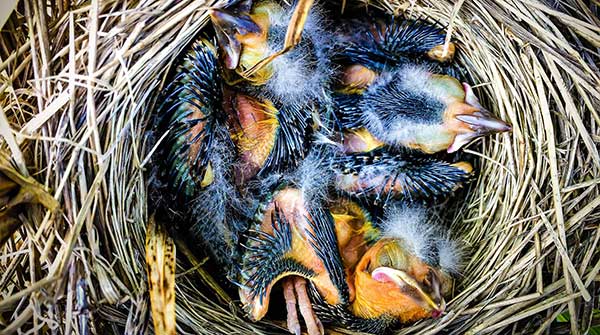Bird research meets AI in a game-changing innovation
Artificial intelligence (AI) is soaring to new heights in the world of bird research, thanks to the pioneering work of a University of Alberta student. Priscilla Adebanji, a computing science student at the university’s Augustana Campus, dedicated her summer to experimenting with AI to enhance the analysis of research videos capturing red-winged blackbirds and their nests.
The potential impact of Adebanji’s work on bird research cannot be overstated. The AI enhancements, once fully developed, have the potential to save researchers hours of tedious manual video review, enabling them to identify specific birds – a crucial task in bird behaviour studies. Augustana professor Ivana Schoepf, who specializes in exploring the effects of parasitism on bird behaviour, emphasized the significance of Adebanji’s contribution to her research.
|
|
| Related Stories |
| AI researchers harness data to drive healthcare innovation
|
| Canadians show mixed reactions to food sector adopting AI
|
| How generative AI is changing the future of customer service
|
|
|
 |
 |
Currently, identifying individual birds in research videos involves listening for their distinct calls, necessitating the review of hours of footage. This process demands expertise in bird biology and is time-consuming work. Schoepf explained, “There has to be a level of knowledge about bird biology, and it also takes time to learn the birds and their calls.”
Automated animal tracking software is readily available for lab studies involving animals like mice. However, using similar technology in the field poses challenges. Schoepf elaborated, “There’s a lot of background vegetation and noise, like wind, so recording conditions are not optimal for automatic detection.”
Moreover, the video quality is often subpar, making it difficult to distinguish between male and female birds. Nests are concealed within marsh cattails, further complicating observations. With approximately 30 hours of video footage spanning two field seasons, Schoepf sought assistance from Adebanji’s computing science professor, Thibaud Lutellier, to automate bird detection.
“We felt there were a lot of applications in AI that could help, though we had no idea what to expect,” Lutellier commented. Adebanji faced various challenges during the project, including false readings generated by existing AI models. She explained, “They seemed to sometimes detect the bird as an airplane, and things like shadows were falsely detected as bears in the background.”
Adebanji tackled these obstacles by employing computer vision tools and motion detection algorithms. Her efforts culminated in the development of software that refined Schoepf’s raw footage. It can now pinpoint the precise moments when birds visit their nests to feed their chicks, discern their movements, and determine whether the same bird has been recorded previously.
While the software is still undergoing refinement, it has already made substantial progress in reducing the labour-intensive nature of data collection for Schoepf’s research. “We have gone from eight hours to a couple of minutes to automatically detect everything,” Adebanji said.
Schoepf envisions the software streamlining video review processes, saving time and effort. Moreover, she sees broader implications for the field of animal biology. “This could provide broad applicability to a multitude of species and projects in different settings, beyond birds. It could improve and expand ecological research.”
Future work on the bird research program will involve exploring AI applications for determining the duration of birds’ visits to their nests and analyzing their calls to determine gender. Additionally, efforts will focus on refining video sound quality and investigating the software’s adaptability to other animals, such as rodents.
Now in her fourth year of undergraduate studies, Adebanji’s project has ignited her passion for AI as a potential career path, extending her knowledge beyond the classroom and into practical, real-world applications. Her contribution to bird research demonstrates the transformative potential of AI in scientific endeavours.
| Troy Media
The opinions expressed by our columnists and contributors are theirs alone and do not inherently or expressly reflect the views of our publication.
© Troy Media
Troy Media is an editorial content provider to media outlets and its own hosted community news outlets across Canada.


